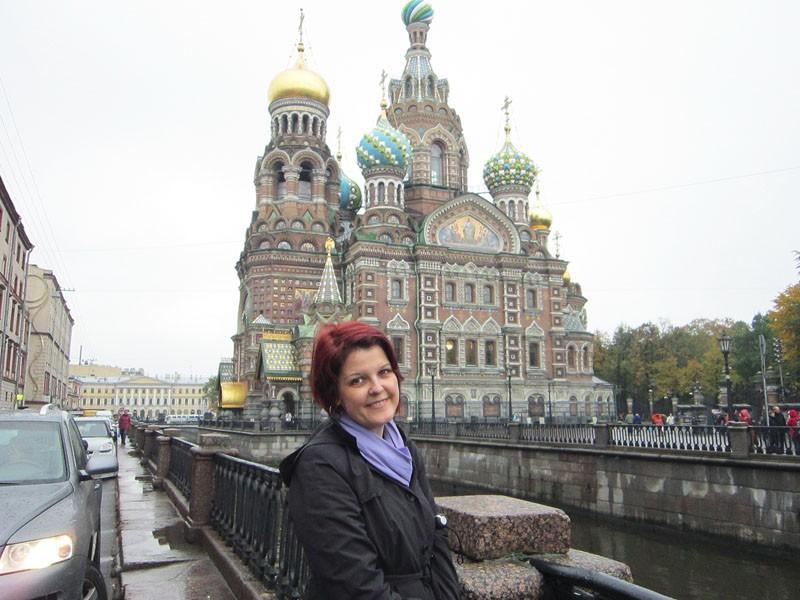No changes planned for sabbaticals

Courtesy Photo / Dr. Heather Tafel Dr. Heather Tafel in St. Petersburg, in front of the Church of Our Savior on Spilled Blood during her sabbatical
Feb 6, 2012
Professor sabbaticals have come under fire as university budgets tighten, but Grand Valley State University Provost Gayle Davis said the amount of sabbaticals at GVSU will not change.
Currently about 61 of GVSU’s 834 tenured or tenure-track professors, or 7.3 percent, take sabbaticals each year, according to data from GVSU’s Office of Institutional Analysis. Of those, 47, or 77 percent, take off one semester, with the rest taking off the whole year. Professors and staff members can take semester- or year-long breaks from their jobs to volunteer, travel, study or research. They receive full pay for one semester or half pay for a full year.
According to GVSU’s Administrative Manual, “Sabbatical leaves are intended primarily to encourage and promote the professional growth of those with faculty status and to enhance their teaching and scholarly effectiveness.” Davis said sabbaticals are “practically indispensable” because they provide faculty opportunities to enhance their teaching abilities. She added that the amount of sabbaticals offered each year has remained fairly constant, and that no changes are being made to the university’s current funding of sabbaticals.
Davis said GVSU has offered faculty sabbaticals since its establishment.
“Sabbaticals provide faculty opportunities to develop and refine their knowledge in their field in order to keep up to date (and) expand into a new area of teaching or scholarship…” Davis said. “(Faculty members can) work in another locale with other professionals in an area of common interest. (Sabbaticals) in other ways enrich their abilities to contribute to Grand Valley’s teaching and scholarship mission.”
After the University of Iowa cut half of its sabbaticals in 2009, MSNBC reported that several U.S. universities considered eliminating sabbaticals in order to cut costs.
A 2006 article in The Detroit News reported that Michigan universities paid more than 500 professors $23.2 million for sabbaticals during the 2004-2005 school year, a sum that drew fire from critics, who argued that taxpayers should not pay for professors to take a break from teaching.
Heather Tafel, a GVSU political science professor, spent September and October of her fall sabbatical in Russia. Tafel visited Moscow and St. Petersburg to research Russia’s ruling United Russia party.
“It was exciting to see how things had changed since I was last in Russia,” she said.
Tafel said the sabbatical allowed her to interview Russian journalists, politicians, and scholars for her research papers, adding that it was easier to conduct research during the school year than during summer vacation because many of the people she interviewed were more accessible during the year.
At GVSU, sabbatical leaves may be granted to tenured faculty members after six consecutive years of full-time service. Staff members wishing to go on sabbatical must write a proposal stating what they will be doing professionally, how the sabbatical will contribute to their studies and what academic skills they will be practicing.
Once a faculty member returns from sabbatical, he or she must prepare a final report stating what activities and accomplishments were done during the leave. Employees are also asked to return to GVSU to teach full-time after the sabbatical.
The College of Liberal Arts and Sciences will host a Sabbatical Showcase in April to allow faculty and staff to discuss their sabbatical research with other faculty members. For more information, visit www.gvsu.edu/clas/sabbatical-showcase-90.htm.





















